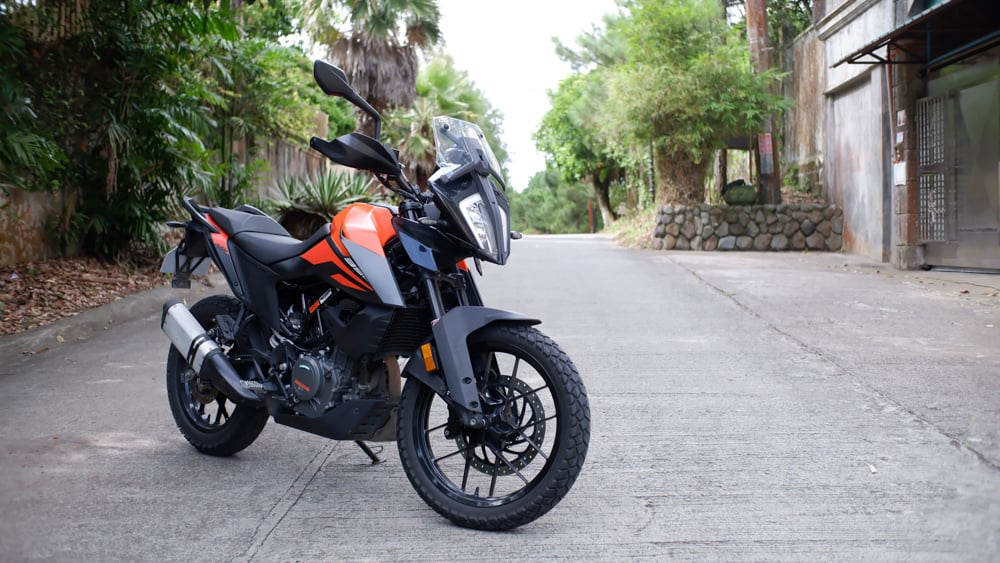
Ride motorcycles long enough and you’ll understand the appeal of adventure bikes. With their upright position, high ground clearance, and off-road-capable spec (in varying degrees), adventure bikes are the SUVs of the two-wheel world. You can take them on mixed terrain, load them up with several days’ worth of luggage, and not be that much slower than a standard motorcycle.
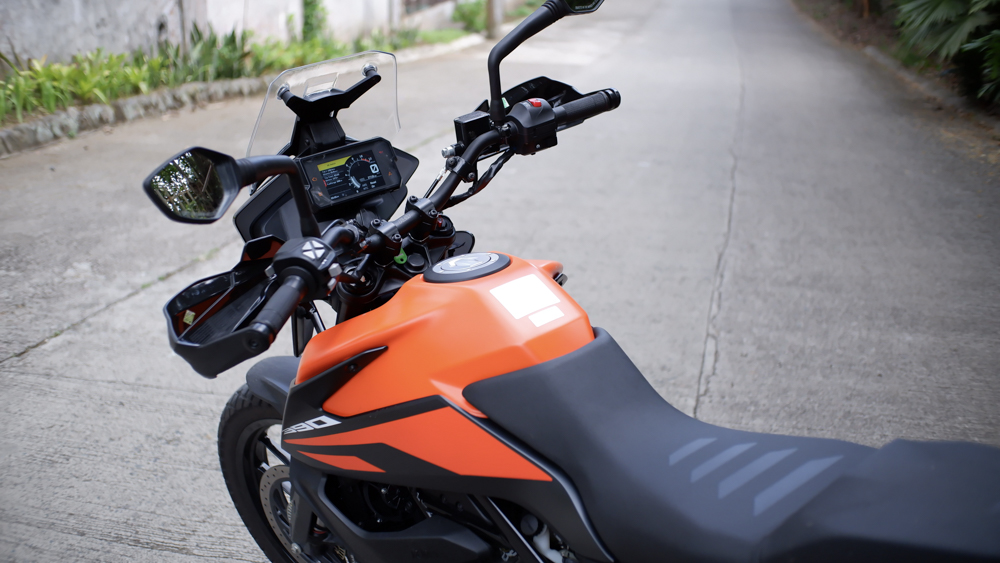
The KTM 390 Adventure is the ruggedized version of the popular 390 Duke platform. It has the same trellis frame but with a different subframe, an identical engine but tuned slightly differently, and upgraded suspension and wheels to tackle moderately difficult terrain. The electronic goodies include traction control and ABS with Road and Off-Road modes.
Visually, the 390 Adventure has nearly the same imposing stance as its big brother, the 790 Adventure. The seat height of 33.7 inches makes it a bit of a climb as with most adventure bikes, but no big deal if you’re 5’8” (like me) or taller. I found the stock seat to be stiff like an ironing board (which I prefer), and with gently angled sides for my inner thighs to rest on. At rest, I was on my toes, but balancing was a non-issue.
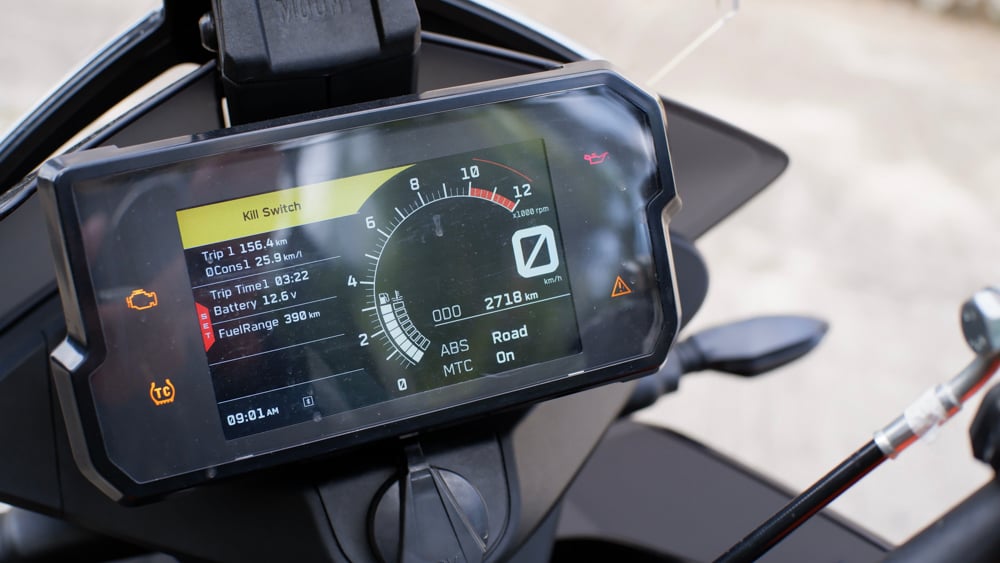
Starting up this motorcycle produces the same, mildly tinny sound as with the Duke and the Husqvarna 401 “Pilens,” and the bike only starts to come alive at the 6,000rpm mark. There isn’t much torque below that, and you may stall the engine if you’ve been used to low-revving units. At rock-crawling speeds or urban gridlock, the bike’s tall gearing puts it at a disadvantage against the tractor-like ease of a competitor like the Royal Enfield Himalayan.
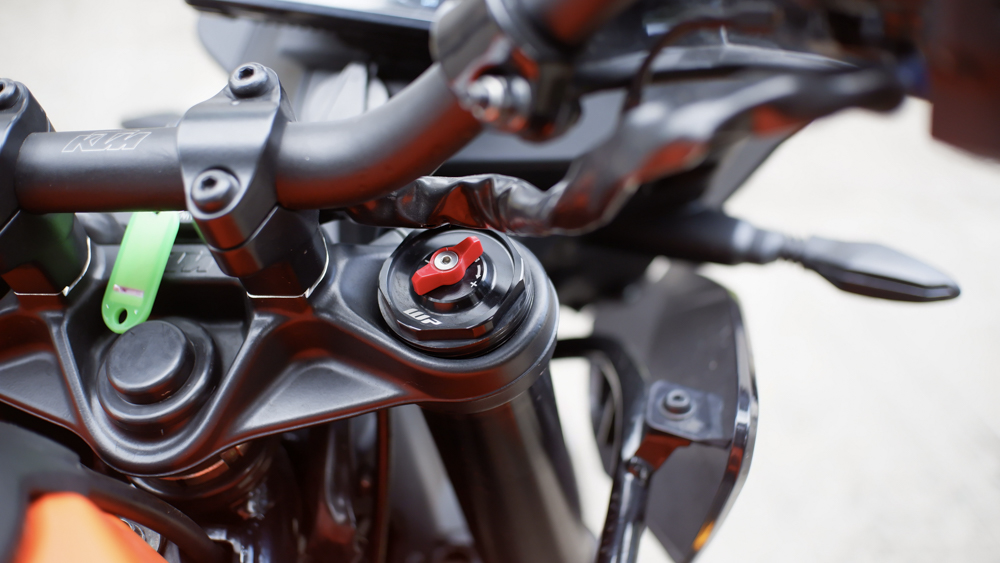
You’ll need to use a lot of clutch slip and throttle control to keep moving at walking pace, so the first thing you should do if you plan to take it on a trail is either change to a smaller front or a larger rear sprocket, whichever option is available. You’ll lose a little bit of top speed, but it’ll be a lot more rideable on trails. Tank capacity of 14.5L coupled with the 373cc engine’s thrifty 25-27km/L efficiency gives you decently long legs of around 250km before the low-fuel warning lights up. Top speed is a shade over 160km/h, but the sweet spot is in the 110-140km/h range—lots of flexibility for overtaking.
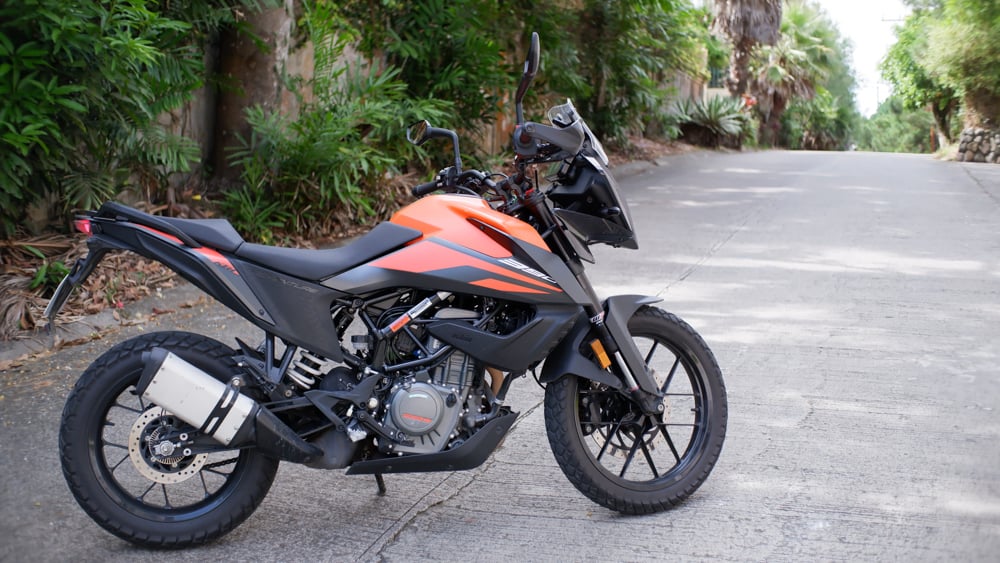
The ride quality is excellent for what’s considered an entry-level bike. The 43mm WP upside-down fork is adjustable for compression and rebound, while the rear monoshock can be set for preload and rebound. The Adventure has the same cat-like agility as the Duke that makes it a lot of fun to thrash around on back roads. The suspension is firm and resists squat and dive unless you really jam on the brakes or load it to the gills. The front fork has 6.7 inches of travel, while the rear is good for 6.9 inches. It’s not as much as a Himalayan’s, but it’s enough for rough roads as long as you don’t treat it like a dual-sport machine.
Stopping power from the ByBre brakes is solid with the brake lever and pedal giving good feedback. The stock Continental TKC 70 dual-sport tires are biased for street use, but they should work okay on gravel and dirt. Get knobbier rubber if you plan on playing in the mud.
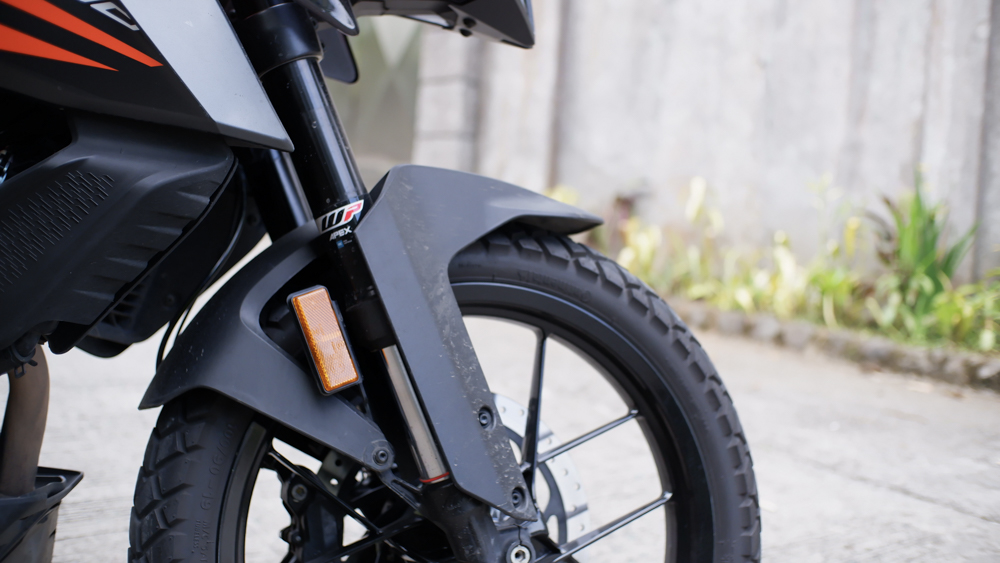
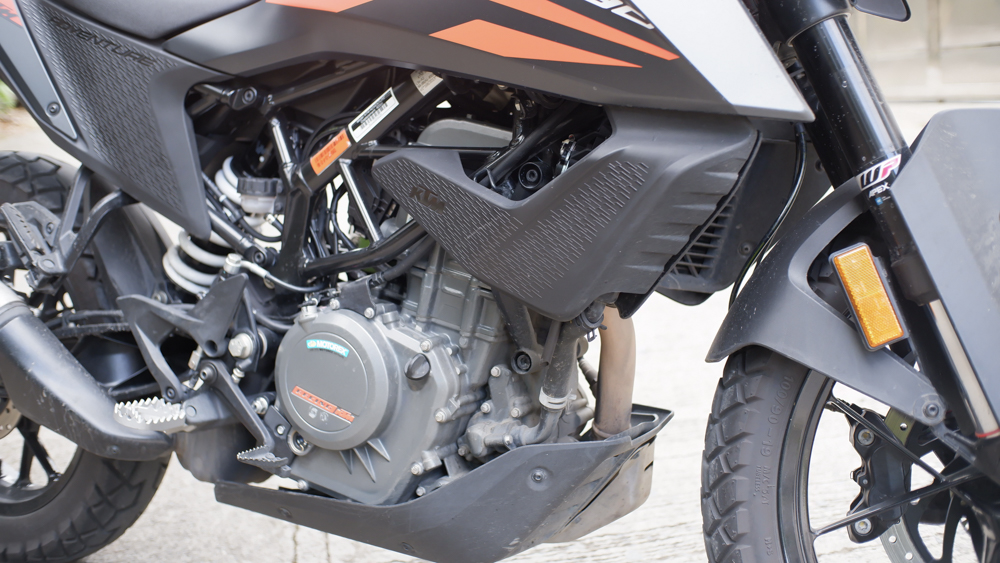
Coupled with a neutral riding position and slightly raised handlebars, you can wring the little thumper to the 10,000rpm redline and annoy all your friends trying to keep up. I really liked the seat-to-peg distance of the Adventure compared to the Duke—just the right knee bend without feeling cramped—and my right foot could cover the rear brake with ease. Stand-up riding was a non-issue for me, although taller riders may find the stock handlebar too low for comfort.
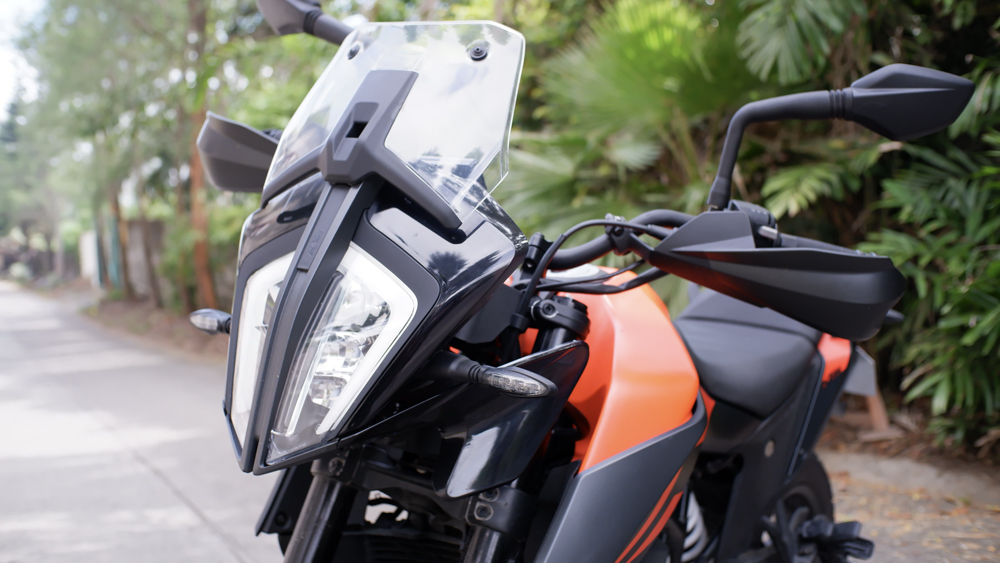
ABS and traction control are part of the package, and the latter can be switched off for off-road use. The ABS can also be set to deactivate the rear for trail riding. Hardcore riders might not like the inability to turn the system completely off (there’s probably a workaround for this in the electricals), but the bike is positioned for novice adventurers and should be a minor issue. The big TFT screen is bright and easy to read under harsh sunlight, but like all other equipped KTMs, it lacks a certain style to amp up the sex appeal.
The unit I reviewed had the optional quickshifter, but something was wrong as it was AWOL during the loan period—yet another reason to distrust too much electronic tech. The stock transmission is easy to clutchless-shift anyway.
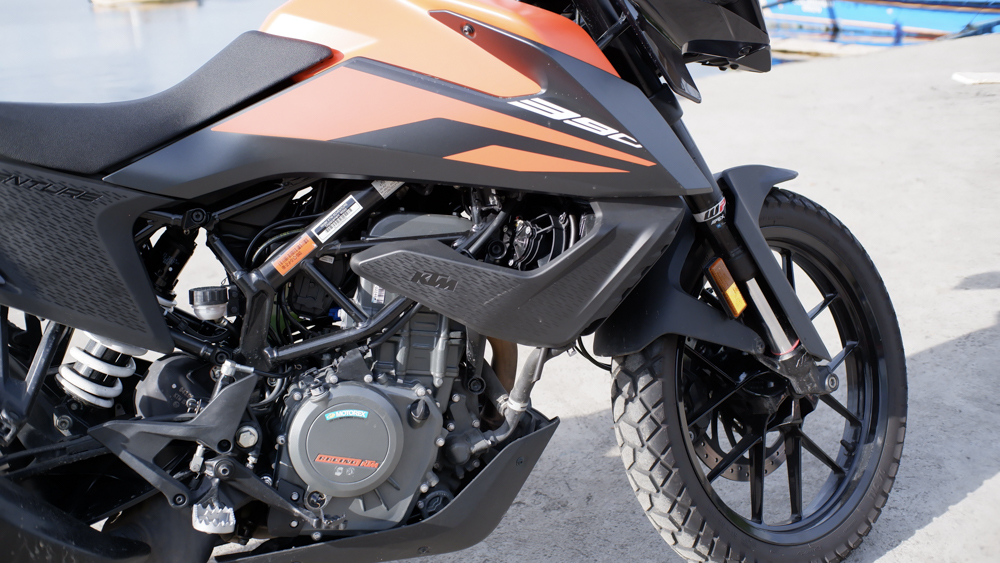
Like all adventure bikes, immediate upgrades should be a set of crash bars for the engine, panniers, and a sturdier skid plate. The stock plastic one has a small metal patch covering the exhaust pipe, but a one-piece metal unit would do a much better job. While the cast-alloy wheels look fine and give you the convenience of wearing tubeless rubber, the optional wire-spoke rims are a worthwhile upgrade if you’re planning to really hit the trails hard. Still, the 19-inch front and 17-inch rear rim sizes mean the 390 will always be at a disadvantage on gnarly trails relative to the goat-like sure-footedness of the Himalayan.
Finally, concerns about overheating are addressed by a larger, curved radiator as well as dual fans for the Adventure (the Duke has a single fan). The engine’s 12.6:1 compression ratio means it’s still quite hot if you get stuck in traffic, but that’s the price you pay for getting quite a bit of power from a small motor. I just turn off the engine for long waiting times at the lights.

For P309,000, KTM’s smallest adventure bike packs a lot of features and manages to work surprisingly well. If you’re looking for a feisty touring machine that can take on occasional dirt excursions and doesn’t cost a fortune, look no further.


0 Comments